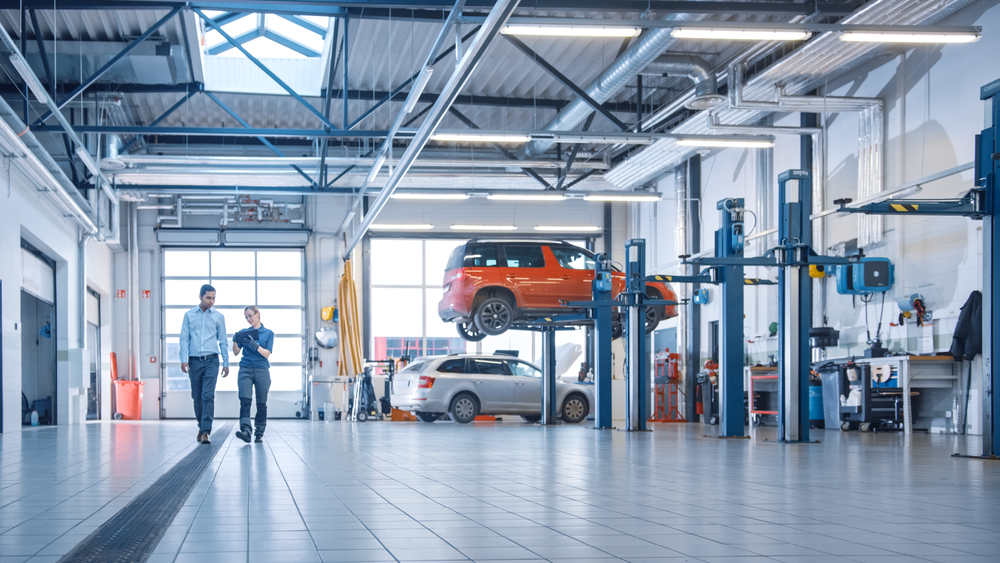
The phrase “garage secret” sounds dramatic, but the truth behind it hits your wallet quietly. Most people hand over their keys and trust the process, never knowing what happens out of sight. Shops itemize labor, parts, and fees, yet entire categories of charges stay buried under vague descriptions. These blind spots drain money, and they do it routinely. Understanding the garage secret builds leverage, reduces waste, and keeps repairs honest. That said, here are six charges that your mechanic probably tacks on but never explains.
1. Diagnostic Time That Far Exceeds Reality
Diagnostic fees sound straightforward. Your mechanic scans the car, performs tests, and reports the issue. But the garage secret often hides in how long these checks actually take. Modern scan tools read most trouble codes in seconds, not hours. The report prints automatically. The shop may charge an hour or more anyway.
Some mechanics bundle multiple checks under one inflated diagnostic block. They rarely show what tools they used, how long each step took, or which tasks were necessary. The added time blends into the invoice, making it appear standard. Drivers assume the line is nonnegotiable, but it rarely reflects the real effort. Ask for a breakdown, and you often see how quickly the number shrinks.
2. Parts “Upgrades” You Never Requested
Parts markups are normal. Shops need to make a margin. The garage secret appears when the markup crosses into quiet upselling. A simple replacement part becomes a “premium” component without your consent. You pay for a higher-tier item that you never asked for and may not need.
The invoice lists the part name but leaves out the brand, model, or source. Without those details, you can’t compare prices. Mechanics know most drivers won’t ask. Some parts arrive from budget suppliers but get billed at top-tier rates. The mismatch stays hidden unless you request packaging or manufacturer information. And when you do, hesitation speaks volumes.
3. Double-Charged Labor Buried in Bundles
Labor quotes look tidy on the surface. A single line, one number. But some shops embed double-charged labor inside bundled services. The garage secret lives in those bundles. For example, removing components to reach a part might be charged twice if two repairs overlap. The shop knows the disassembly happens once, but the invoice treats each repair as isolated.
This tactic inflates labor without adding real work. It pads hours and masks efficiency gains from experience or better tools. You pay for tasks the mechanic never performed more than once. Shops rarely flag these overlaps unless asked directly. When they do, the labor hours often drop fast.
4. Supplies Fees That Cover the Same Items Repeatedly
Many garages add a supplies fee. It’s small enough that customers ignore it. The garage secret hides in what it covers. Shops use broad terms like “shop supplies,” then apply the fee on every visit. That fee may include gloves, rags, tape, or cleaners. These items become recurring charges without clear consumption.
Some shops charge a percentage of the total bill rather than a fixed amount. That means high-ticket repairs incur disproportionately high supply fees. The cost increases even though the supplies do not. The percentage model makes the fee look legitimate, but it’s a simple multiplier designed to inflate revenue. Asking for a list of supplies often leads to vague explanations or none at all.
5. Add-On Inspections You Didn’t Approve
Many mechanics perform courtesy inspections. They check fluids, belts, and filters. These sound harmless until they appear on the invoice as paid services. The garage secret is that these checks can morph into billable items without explicit approval.
The staff might claim the inspections are standard. You see charges for things you never authorized. Some drivers pay without knowing the inspections were optional or free elsewhere. The issue isn’t the inspection—it’s the quiet shift from courtesy to cost. That shift stays hidden unless you ask why it’s on the bill.
6. Environmental Fees With No Transparency
Shops handle oil, coolant, and old parts. Fees for proper disposal make sense. The garage secret appears when environmental fees are inflated or duplicated. One service might include fluid disposal, yet the invoice adds a second charge under a different name.
Some shops adjust the disposal fee based on the total cost of the repair, which makes no practical sense. The amount of waste does not change when the repair is more expensive. Still, the fee rises. Drivers rarely challenge it because environmental language sounds official. It’s hard to question without looking uninformed. But the charge often bears no connection to actual disposal costs.
Why These Hidden Costs Stick Around
The garage secret thrives because the system rewards opacity. Shops rely on customers who want convenience and avoid conflict. The more complicated the bill looks, the less likely anyone is to challenge it. Mechanics know the average driver can’t decode the difference between legitimate labor and padded hours. They also know vague language shields them from scrutiny.
Some customers accept the invoice as part of owning a car. Others suspect something is off but lack the details to fight it. The hidden fees survive because they’re small enough individually to slip past attention but significant in total. Over time, these charges cost people hundreds, sometimes thousands, without them noticing. The best defense is simple: ask for clarity, ask for proof, and ask before the work begins.
What hidden charges have you spotted on your repair bills?
What to Read Next…
- 10 Things Your Mechanic Can Legally Do Without Telling You
- 8 Signs Your Mechanic Is Quietly Upselling You Without Saying a Word
- 9 Signs Your Mechanic Is Overcharging But Legally
- 8 Car Maintenance Habits That Will Save You Thousands
- 10 Common Car Repairs That Will Cost You Less Than You Think
The post The Garage Secret: What Your Mechanic Charges for but Never Shows You appeared first on Clever Dude Personal Finance & Money.







